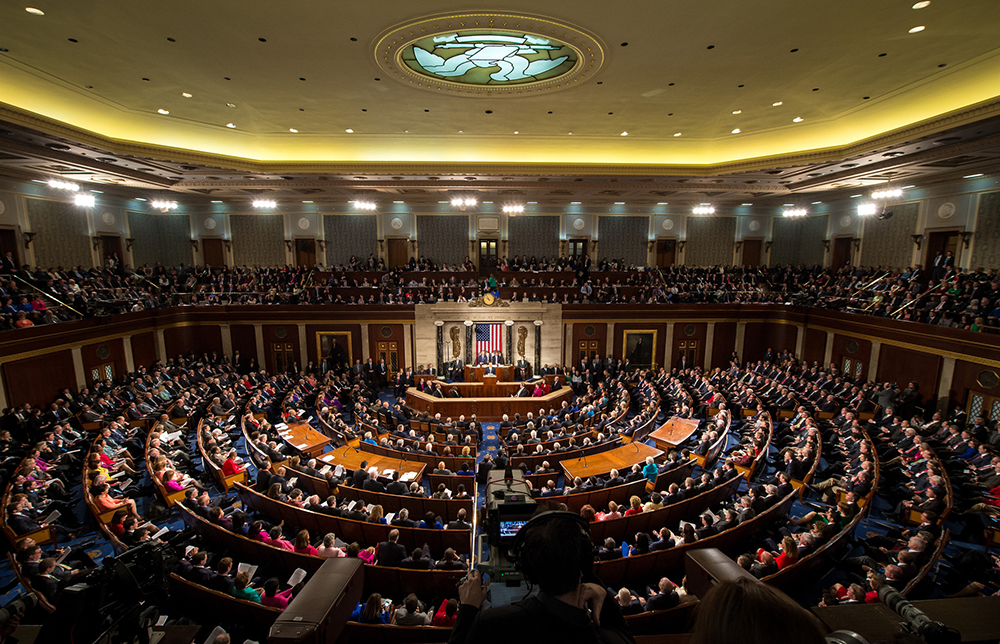
The successful vote by both chambers is required to toss out that state's vote count. A successful objection will be followed by separate debate and votes on the objection in each chamber of Congress. Members of Congress can object to any state's vote count, provided that the objection is supported by at least one member of each house of Congress. Relevant portions of the Certificate of Vote are read for each state, in alphabetical order. Each chamber appoints two tellers to count the vote (normally one member of each political party). Senate pages bring in the two mahogany boxes containing each state's certified vote and place them on tables in front of the senators and representatives. The vice president and the speaker of the House sit at the podium, with the vice president in the seat of the speaker of the House.
JOINT SESSION OF CONGRESS PRO
The sitting vice president is expected to preside, but in several cases the president pro tempore of the Senate has chaired the proceedings instead.

Eastern time on January 6 in the Chamber of the House of Representatives. The joint session to count electoral votes is held at 1:00 p.m. Until 1936, the outgoing Congress counted the electoral votes. The Twentieth Amendment now provides that the newly elected Congress counts the votes. The act also specifies that the president of the Senate presides over the session. The Electoral Count Act of 1887 requires the votes to be counted during a joint session on January 6 following the meetings of the presidential electors. The Twelfth Amendment since 1804 has provided that the vice president, as President of the Senate, receives the Electoral College votes, and then, in the presence of the Senate and House of Representatives, opens the sealed votes. However, the Constitution requires the vice president (as president of the Senate) to preside over the counting of electoral votes. Joint sessions and meetings are usually held in the Chamber of the House of Representatives, and are traditionally presided over by the speaker of the House. A joint meeting is a ceremonial or formal occasion and does not perform any legislative function, and no resolution is proposed nor vote taken. Joint sessions can be held on any special occasion, but are required to be held when the president delivers a State of the Union address, when they gather to count and certify the votes of the Electoral College as the presidential election, or when they convene on the occasion of a presidential inauguration. A joint session of the United States Congress is a gathering of members of the two chambers of the bicameral legislature of the federal government of the United States: the Senate and the House of Representatives.


 0 kommentar(er)
0 kommentar(er)
